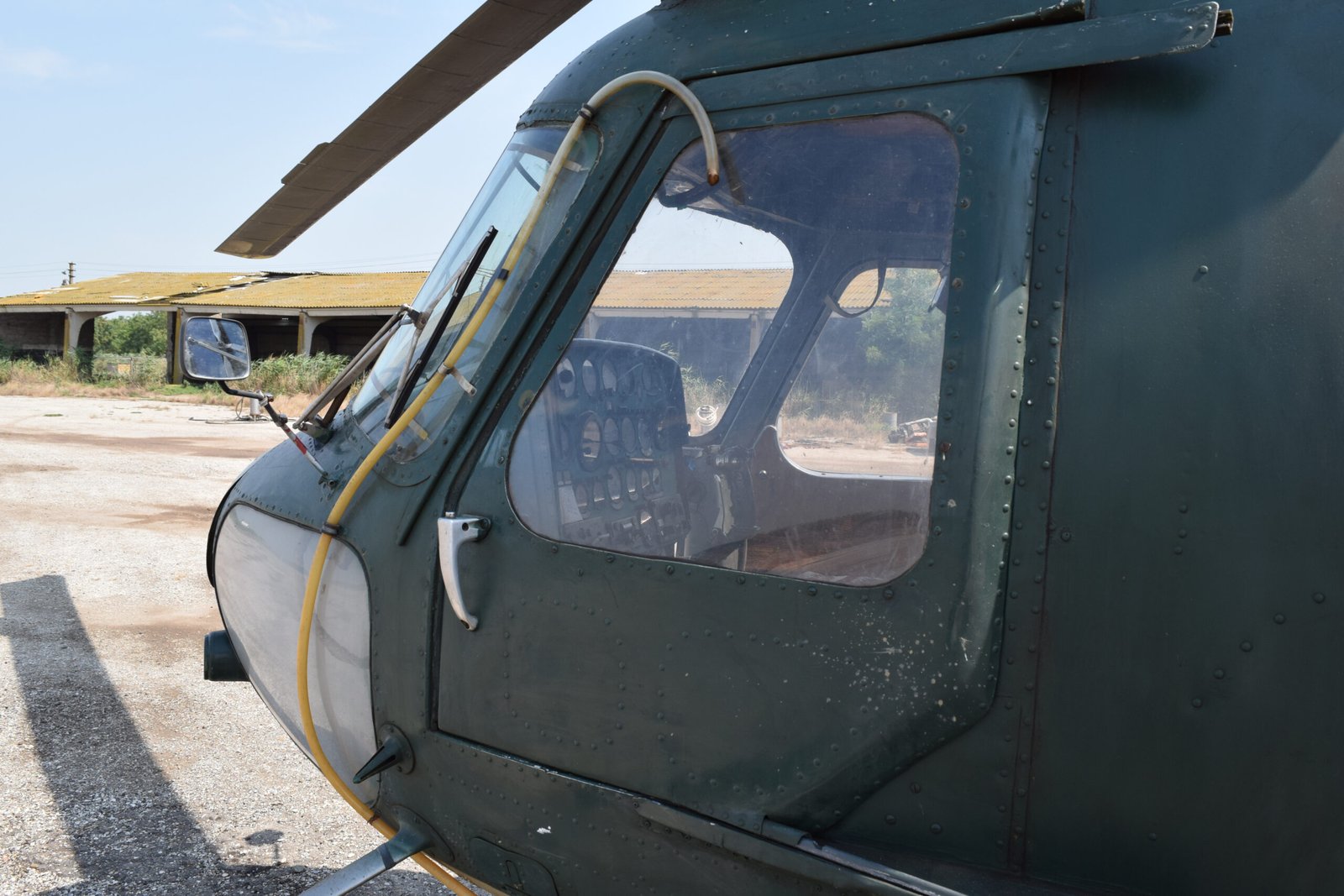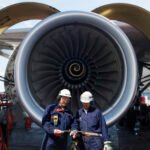Flight Training
Flying Green: How Aviation is Tackling Climate Change
As the world grapples with the pressing issue of climate change, the aviation industry stands at a crucial crossroads. While air travel has long been associated with significant carbon emissions, a wave of innovation and education is transforming how we think about flying. From new sustainable technologies to eco-conscious training programs, the aviation sector is actively working to reduce its environmental footprint. Let’s explore how aviation schools are adapting their courses, discover valuable resources in the field, and examine FAA-approved training options that emphasize sustainability.
*Aviation Schools: Types of Courses**
Aviation education has evolved significantly over recent years to address both traditional flying skills and emerging green technologies. Various types of courses are now available to aspiring aviators:
1. **Pilot Training Programs:** Traditional flight schools offer comprehensive pilot training that includes ground school instruction on aerodynamics, navigation, and regulations alongside practical flight experience. With an increasing focus on hybrid and electric aircraft, many programs are beginning to incorporate lessons on environmentally friendly flying practices.
2. **Aeronautical Engineering:** These courses cover aircraft design and technology with an emphasis on developing more efficient engines and lighter materials that reduce fuel consumption. Students learn about sustainable aviation fuels (SAFs) and their potential role in mitigating climate impact.

3. **Air Traffic Management:** This discipline focuses on optimizing flight paths using advanced technology to minimize delays and fuel usage during takeoff, cruise, and landing phases. Emphasis is placed on reducing carbon footprints while maintaining safety standards.
4. **Sustainable Aviation Programs:** Some institutions now offer specialized tracks dedicated entirely to green aviation technologies—teaching students about renewable energy sources for aircraft power as well as emissions reduction strategies.
*Essential Resources for Aviation Enthusiasts**
For those interested in staying updated on green initiatives within aviation or seeking knowledge beyond classroom walls, numerous blogs, websites, and social media platforms exist:
**Blogs:**
– *The Air Current* offers insights into current trends affecting the airline industry.
– *GreenAir Online* focuses specifically on sustainability in air transport.
– *FlightGlobal* provides news updates regarding technological advancements.
**Websites:**
– The International Air Transport Association (IATA) outlines global efforts toward achieving net-zero emissions by 2050.
– Sustainable Aviation Fuel Users Group presents research findings related to SAF development.
**Social Media Platforms:**
– Twitter accounts like @AeroTimeNews showcase breaking news stories related to eco-friendly initiatives.
– LinkedIn groups such as “Sustainable Aviation” foster discussions among professionals passionate about greener skies.
*FAA Flight Schools: Training for Tomorrow’s Pilots**
When selecting a flight school or simulator program approved by the Federal Aviation Administration (FAA), aspiring pilots should consider those integrating modern sustainability practices into their curriculum:
Many FAA-certified flight schools now provide simulator sessions that allow trainees to practice emergency scenarios in electric aircraft models or learn about fuel-efficient flying techniques without leaving a hefty carbon footprint behind.
Reputable institutions like Embry-Riddle Aeronautical University have begun offering degrees focused not only on traditional piloting but also include coursework centered around sustainable practices within aviation operations.
Ultimately, as the industry embraces greener alternatives—from innovative technologies in aircraft design to educational programs aimed at fostering environmentally responsible pilots—the future of aviation looks brighter than ever before. By investing time into understanding these developments through various resources, we can all become part of this crucial transformation toward sustainability in our skies!
Flying Through History: Milestones That Changed Aviation Forever
Aviation has always been an exhilarating journey, one that intertwines human ingenuity and relentless ambition. As we soar through the annals of history, it’s essential to recognize how education and information dissemination have played pivotal roles in shaping the aviation landscape. From specialized schools to vibrant online communities, let’s explore how these milestones continue to influence future aviators.
*Aviation Schools: Types of Courses**
The pathway to becoming a skilled aviator is paved with diverse educational opportunities. Aviation schools offer a variety of courses tailored to different facets of the industry. At the heart of these programs are traditional flight training schools, where students can earn private pilot licenses (PPL) or commercial pilot licenses (CPL). Beyond flying skills, many institutions provide ground school classes that cover vital topics like navigation, meteorology, and aircraft systems.
For those interested in the technical side, maintenance and engineering courses are available at numerous vocational colleges. These programs delve into aircraft design principles, airframe mechanics, and powerplant operations—essential knowledge for ensuring safety in the skies.
Additionally, aspiring pilots may choose programs focused on aviation management or business administration. These courses prepare individuals for leadership roles within airlines or airport operations. The blend of practical skills with theoretical knowledge creates well-rounded professionals capable of navigating this complex field.
*A List of Essential Aviation Blogs and Websites**
In our digital age, staying informed is as important as formal education. A plethora of blogs and websites dedicated to aviation can help enthusiasts and professionals alike keep abreast of industry trends and innovations. Here are some must-visit resources:

1. **Airliners.net** – A hub for aviation enthusiasts featuring stunning photography alongside discussions on various aircraft.
2. **Flying Magazine** – This publication offers insights into piloting techniques while also sharing personal stories from seasoned aviators.
3. **AvWeb** – An online source providing news updates on everything from technology advancements to regulatory changes affecting pilots.
4. **Pilot’s Digest** – A collection of articles covering training tips, gear reviews, and stories from across the globe.
5. **FlightAware** – Excellent for tracking real-time flights; it’s invaluable for both hobbyists and professionals monitoring air traffic.
Social media platforms also serve as dynamic venues for discussion and learning. Following accounts such as @FallingSkyNews on Twitter or engaging with Facebook groups like “Aviation Enthusiasts” can enrich your understanding while connecting you with fellow aviation aficionados.

*FAA Flight Schools: Simulators and More**
The Federal Aviation Administration (FAA) plays a crucial role in establishing standards for flight schools across America. FAA-certified flight schools offer structured training programs that adhere to rigorous guidelines ensuring safety and efficacy in pilot education.
These institutions frequently incorporate advanced simulators into their curriculum—tools that replicate real-world flying scenarios without leaving the ground! These high-tech devices allow students to practice maneuvers under various conditions safely before taking control of an actual aircraft.
From fundamental concepts taught at local community colleges to specialized institutions focusing solely on aviation careers, there’s an abundance of choices awaiting future pilots eager to take off into their dreams.
As we reflect on these critical milestones in aviation education—from diverse course offerings at schools to thriving online communities—the evolution continues unabated! With each new generation equipped with knowledge gained from past experiences, who knows what heights humanity will reach next? The sky truly is not just a limit; it’s an invitation!
Soaring High: The Future of Aviation Technology
The aviation industry is on the cusp of a technological revolution that promises to reshape how we think about air travel. As innovation takes flight, aspiring pilots and aviation enthusiasts are presented with unprecedented opportunities for education and growth. In this post, we’ll explore different types of aviation schools, delve into essential blogs and websites, and highlight FAA-certified flight schools.
### Types of Aviation Courses
Aviation schools offer a variety of courses tailored to diverse interests within the field. Here are some key categories:
1. **Pilot Training Programs**: These courses provide foundational knowledge for aspiring pilots. They often include ground school, flight training with certified instructors, and simulator sessions that cover everything from basic maneuvers to advanced navigation techniques.
2. **Aircraft Maintenance Engineering**: For those inclined towards the technical side of flying, these programs focus on aircraft systems, troubleshooting, maintenance protocols, and safety regulations. Students gain hands-on experience working on real aircraft.

3. **Aviation Management**: This course streamlines the business side of aviation by teaching students about airport operations, airline management, regulatory compliance, and marketing strategies specific to the industry.

4. **Air Traffic Control Training**: Critical for maintaining safety in busy airspaces, these programs train students in communication skills, radar operation, and crisis management necessary for effective air traffic control.
5. **Drone Technology Courses**: With unmanned aerial vehicles gaining traction across various sectors—such as delivery services and agriculture—these courses prepare students for careers in drone piloting and operations.
### Essential Aviation Blogs & Websites
Staying informed is crucial in an ever-evolving field like aviation. Here’s a curated list of blogs and websites that avid followers should bookmark:
**Flying Magazine (flyingmag.com)**: A treasure trove for enthusiasts featuring news articles, product reviews, pilot stories, and tips for improving flying skills.
**Airline Reporter (airlinereporter.com)**: This blog offers insights into airline industry news along with personal experiences shared by passionate travelers.
**AvWeb (avweb.com)**: A leading online resource providing up-to-date information on general aviation news including product announcements and technology advancements.
**PilotWorkshops (pilotworkshops.com)**: Focused on enhancing pilot proficiency through workshops led by experienced aviators covering everything from navigation to emergency procedures.
**YouTube Channels like “FlightChops” or “Mentour Pilot”**: Engaging video content that brings flying experiences directly to your screen while offering tips from seasoned pilots.
Social media platforms also serve as valuable resources; following accounts like @AviationWeek or @FlybyWireSim can keep you informed about developments directly impacting the industry!
### FAA Flight Schools & Simulators
When it comes to obtaining your pilot’s license or advancing your skills further, FAA-certified flight schools are indispensable. These organizations meet stringent federal regulations ensuring quality training:
**ATP Flight School**: Known for its comprehensive programs focusing on Airline Transport Pilot certifications.
**Embry-Riddle Aeronautical University**: A leader in aerospace education offering degrees ranging from aeronautics to engineering.
**American Flyers**: This institution provides personalized instruction catering to both beginner pilots and professionals looking to refine their skills.
Additionally, simulators have become an integral part of pilot training programs. Advanced flight simulation technology allows trainees to practice complex scenarios safely before taking off into real skies—a critical component in ensuring safe aviators ready for any situation they may face once airborne.
In conclusion, as we soar into the future of aviation technology—with its promising educational paths and groundbreaking innovations—the sky truly is not the limit; it’s just the beginning! Whether you’re looking to fly high yourself or merely stay informed as an enthusiast, now is an exciting time to engage with all facets of this dynamic industry!
Flying Into the Future: The Latest Innovations in Aviation Technology
The aviation industry stands on the brink of a technological revolution, blending tradition with cutting-edge innovations. From training pilots with advanced simulators to the rise of drones and online learning platforms, the future is taking flight in ways we could hardly imagine just a decade ago. Let’s delve into some of the latest advancements transforming how we approach aviation.

*Aviation and Technology Training: Simulators**
Gone are the days when aspiring pilots had to rely solely on real aircraft for training. Today, flight simulators have become an integral component of pilot education. These sophisticated tools replicate real-world flying conditions with stunning accuracy, allowing trainees to experience everything from routine maneuvers to emergency situations without leaving the ground.
Modern simulators incorporate virtual reality (VR) technology, making training sessions immersive and realistic. Learners can engage in simulated flights that mimic weather changes or mechanical failures, thus better preparing them for actual flight scenarios. This innovative training not only enhances safety but also optimizes costs associated with traditional flight instruction.
*Essential Aviation Blogs and Resources**
For those who want to stay informed about ongoing developments in aviation technology, numerous blogs and websites serve as valuable resources:
1. **The Points Guy** – Focuses on travel tips and airline news.
2. **Airliners.net** – A community-driven site showcasing photos and discussions on aviation topics.
3. **Aviation Week** – Offers insights into aerospace trends, technology advancements, and industry analysis.
4. **FlightGlobal** – Provides updates on airlines, aircraft manufacturers, and regulatory changes.
5. **Jetwhine** – A mix of opinions on aviation issues along with entertaining stories from pilots.
Social media platforms like Twitter feature hashtags such as #AvGeek or #PilotLife that connect aviation enthusiasts globally. Following accounts of airlines, flight schools, or influential aviators can keep you updated while also building your network within this exciting field.
*Online Aviation Courses: Ground Schools & Careers**
The advent of online education has made it easier than ever to pursue a career in aviation without geographical constraints. Many organizations offer comprehensive online courses that cover foundational knowledge essential for aspiring pilots or those looking to start careers in ground operations.
These courses often include Ground School programs that prepare students for FAA certification exams while providing flexible scheduling options—ideal for busy individuals juggling work and study commitments. Platforms like Coursera or Udemy host various programs ranging from introductory pilot training to specialized subjects such as air traffic control or aircraft maintenance.
With growing demand for qualified pilots due to global travel resuming post-pandemic, many airlines actively recruit trained professionals through dedicated job boards like PilotJobs.com or Avjobs.com.
*The Drone Revolution**
Drones have emerged as one of the most intriguing facets of modern aviation technology. With applications ranging from aerial photography to package delivery and agricultural surveillance, these unmanned aerial vehicles (UAVs) are reshaping industries across the board.
Regulatory bodies like the Federal Aviation Administration (FAA) provide guidelines around drone usage ensuring safety while promoting innovation in this sector. Their website offers comprehensive resources about drone registration processes along with information concerning Part 107 licensing—a must-have for commercial drone operators.
In conclusion, as we fly into an exciting future where technology meets traditional practices within aviation, staying updated through reliable sources becomes vital for enthusiasts and professionals alike. Whether it’s embracing simulator training or exploring online courses tailored specifically for aviation careers—or even navigating the new world of drones—the sky truly is not the limit; it’s just the beginning!

From Runway to Reality: The Transformative Power of Drones
In the realm of aviation, the intersection of technology and training has reached unprecedented heights. The evolution from traditional flight methods to modern innovations like drones illustrates a transformative journey that reshapes both our skies and our training methodologies. As we delve into this airborne revolution, it becomes clear that embracing technology is not just optional; it’s essential for anyone aspiring to soar in the aviation world.

First and foremost, simulators have revolutionized aviation training. Gone are the days when aspiring pilots solely relied on hours spent in real aircraft. Today’s sophisticated flight simulators replicate every conceivable scenario a pilot might face, providing a safe environment for skill enhancement. These simulators range from basic to highly advanced systems, enabling pilots to practice everything from routine takeoffs to emergency landings without risking lives or equipment. This immersive experience cultivates confidence, sharpens decision-making skills, and facilitates better retention of knowledge—making it a cornerstone of modern pilot education.
For those seeking insight into the vast landscape of aviation commentary and expertise, numerous blogs and websites serve as invaluable resources. Sites like *Airliners.net* offer forums for discussion among aviation enthusiasts, while *The Points Guy* provides tips on maximizing travel rewards—highlighting how various technologies can enhance air travel experiences. Additionally, social media platforms such as Instagram and Twitter buzz with accounts dedicated to aviation photography and industry news. Accounts like @AviationDaily or @PilotVlogs engage followers with captivating visuals and updates about current events in the aviation sector.

Recognizing the need for continuous learning in this rapidly evolving domain is crucial. Online aviation courses have surged in popularity, making education accessible regardless of geographic location. Institutions like Embry-Riddle Aeronautical University offer comprehensive ground schools that cater to all levels—from novice flyers to seasoned professionals looking to update their skills amidst technological advancements. Platforms such as Coursera feature specialized courses on drone operations or aerodynamics that allow learners flexibility while diving deep into complex subjects at their own pace.
With this technological boom comes a plethora of job opportunities within the field—especially for pilots trained in drone operation. According to recent FAA reports, commercial drone usage is projected to grow exponentially over the next decade across various sectors including agriculture, real estate, emergency services, and logistics. This demand creates an enticing career path for those who already possess piloting skills or seek certification specifically tailored toward unmanned aerial vehicles (UAVs).
Navigating this new terrain requires understanding regulatory guidelines set forth by authorities like the Federal Aviation Administration (FAA). Their website serves as an essential resource where budding pilots can find information on licenses needed for drone operators alongside safety regulations necessary for compliant flying practices. The FAA’s Remote Pilot Certification program ensures that individuals are well-versed in operating drones safely while following established protocols—a vital component in promoting responsible use as this technology proliferates.
In conclusion, as we transition from runways crafted for manned flights towards expansive skies ripe with possibilities offered by drones, embracing these innovations leads us toward exciting futures within aviation careers—ones filled with endless opportunities for growth and exploration. The synergy between technology training via simulation and online coursework encapsulates a commitment to excellence that will undoubtedly shape tomorrow’s aviators into pioneers ready to navigate uncharted territories above us all!



